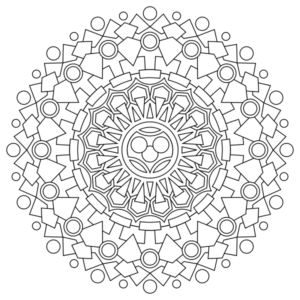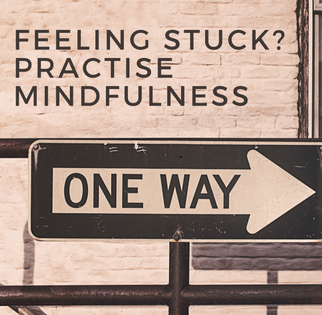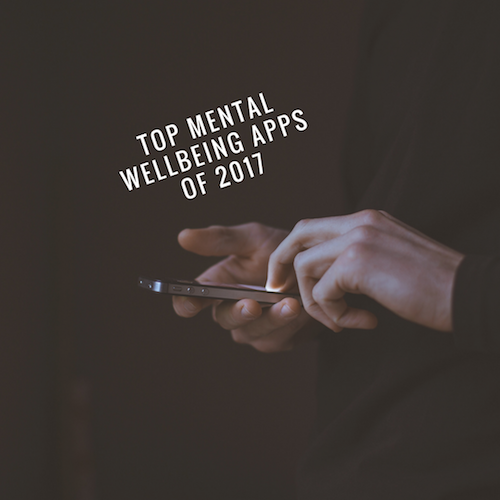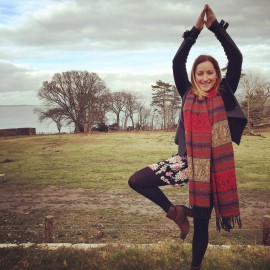Six Easy Ways to Practise Mindfulness
Six Easy Ways to Practise Mindfulness
The hot new word of the moment, ‘mindfulness.’ But do we actually know what it means? I’ve had so many people ask me about mindfulness – ‘What is it?’ ‘How can it help?’ ‘What’s the difference between mindfulness and meditation?’ ‘I can’t meditate so does that mean I can’t practise mindfulness?’ What is an idea of simplicity, can coincidently feel confusing and unduly mysterious. So via these easy ways to practise mindfulness I hope to expel some of that mystery and bring us back to the most important reasons why mindfulness is so good. Read some background on what mindfulness is or scroll straight to the bottom to see my six favourite and easy ways to practise mindfulness everyday so you can start reaping the benefits with no effort required.
Think back to the last few days or week. What do you remember? Feels bit blurry, right? This is because often we’re not actually in the moment; I mean we’re there physically obviously, but mentally we’re elsewhere, completely shopping lists, worrying about the children, thinking about bills we have to pay, what we’re going to eat tonight, what we’re going to do at the weekend, we’re everywhere but in that actual moment. How great would it be if we could just ‘be’ for a moment. Sounds a luxurious idea doesn’t it, but through mindfulness we can do just that. It gives us the permission, the ability and the trust to surrender to the now.
Some of you may be thinking this is pretty hard to do when you have a million things to do each day and there’s no time for anything. But that’s where mindfulness can be so great; it’s flexible, you need nothing but yourself and it can take anything from as less as 2 minutes to practise so there really is no excuse. In fact it’s now considered an evidence based approach, meaning that studies and research have shown the practise of mindfulness can actually increase our productivity and efficiency and getting tasks done. There are also many other ways this wonderful little modality can serve us all, helping with insomnia, anxiety, depression, negative thoughts, the list goes on. Basically it’s worth a try, whoever you are and the six easy ways to practise mindfulness I have identified for you are my favourites for the fact that I have seen them help clients with all manner of concern.
What Actually is Mindfulness?
Well, John Kabat-Zinn (founder of MBSR) defines it as “awareness that arises through paying attention, on purpose, in the present moment, non-judgementally,”
How I explain this to my clients is that by using certain grounding techniques you begin to pay attention to the details and qualities of each moment, which in turn draws you to the present. You lose past and future expectation and fears, you let go of judgement and you allow yourself to become content with it all.
The techniques I have listed as my six easy ways to practise mindfulness, I think encapsulate all that is mentioned above; they are simple, for anyone, can be done anywhere and don’t involve much time. I would advise trying one each day of the week to really get a flavour of what works best for you or if there is one that fits you straight away then go ahead and introduce it into your day.
REMEMBER although just done once can be good, to really achieve the full benefits a little mindfulness each day is what will keep that stress at bay.
My Top Six Easy Ways to Practise Mindfulness
1. Daily routines: This is an easy one to bring into your day and I find it really helpful way to start the day when I make a cup of tea in the morning. Equally it can be a great winding down from the day technique too. For example after a shower taking your time moisturising or making a cup of herbal tea before bed.
- Pick a daily routine, such as brushing teeth, making cup of tea, filling up your car, running a bath, washing your face, moisturising your body, traveling to and from work.
- Switch off all distractions and immerse yourself in that routine.
- Become aware of all of your senses, running through each one and noticing what you hear, feel, see, smell, taste.
- As you move through the routine what you notice may change, observe this change.
- If your thoughts drift, come back to the routine. Be ok with your thoughts drifting, remind yourself this normal, but slowly bring yourself back to the moment.
2. Breathing: Our breath can be a great anchor to the moment and is always there for us to tap into.
- Find a comfortable seat, or lying down, turning phone on silent
- You can set a timer for 3 minutes if helpful
- Place your hands on your belly
- Begin to draw your attention to your breath and the up and down movement of the belly
- Take a deep inhale for a count of three, hold the breath for a count of 3 and exhale for a count of 3- repeat once more
- Now imagine a balloon in your belly which you are attempting to fill up. Every time you take an inhale, fill up that balloon as much as you can. Once it’s full hold it there for a moment and then slowly let the air out. Imagine you are loosening your finger on the balloon and slowly the air is released.
- Notice how your body deflates and inflates like that balloon
- Repeat this, keeping your focus on the balloon until the timer goes off (or you have repeated 10 times)
3. Walking: A great all-rounder, bit of exercise and some mindfulness.
- Take a 10 -15 minute walk outside. Raining? Grab a jacket, (I think it’s even nicer in the rain).
- As you walk bring your attention first to your feet connecting with the ground
- Start to feel into the rhythm, maybe begin to count 1,2,3,4, 1,2,3,4.
- Notice what’s around you, what can you see? The objects, the colours, the feel of the air.
- As you walk the scenery changes and so may your thoughts, just slowly bring them back to the new things you are seeing, smelling, hearing and feeling or back to your count.
4. Colouring in: Yes it’s not just for kids. Helps fire up the creative energy in us all too.
- Print some colouring in pictures off the internet or you can even get books for adults now.
- Find prints that are complicated, mandalas are great for this.
- Get a pack of lots of coloured pencils
- Find a quiet spot, no distractions
- Keep your awareness on the picture as it forms, the colours you choose and the rhythmic movement of the pencil on the paper.
- Set yourself 5-10 minutes on this task
5. Eating: I like this one because I love food and brings a whole new appreciation, but it can be quite hard to focus esp. if you live with others. Good for lunch at work though as a way to get your brain re-energised before the afternoon begins.
- Pick one meal in your day where you remove all distractions, i.e. no technology and no conversations, just you and your food.
- Spend the next 10 minutes being aware of each mouthful.
- Every time your thoughts drift bring them back to the food.
- Think about the movements you make to consume the food, the taste and texture in your mouth, the colours & the smells.
- Think about how the food sounds as you chew.
- Notice the silence around you. Take your time.
6. Use STOP: An in the moment technique to reduce stress or anxiety during the day.
- S – Stop (stop what you’re doing and close your eyes)
- T – Take three deep breaths (inhaling deeply and exhaling deeply)
- O – Observe (how you feel in your body, what you can hear outside of your body and the sound and feel of your breath)
- P – Proceed (whether you proceed to one of the above techniques or whether just the process of stopping and becoming aware has helped so you can now proceed with whatever you were doing before)






